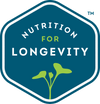Reduce Your Food Waste
Spring has sprung and Earth Day has come and gone. Nutrition for Longevity believes that we should treat every day like Earth Day! What better way to keep celebrating our planet than to make a conscious effort to reduce our food waste. Our levels of food waste directly affect the environment. Reducing wasted food conserves energy and resources and prevents pollution involved in the growing, manufacturing, transporting, and selling of food.1 At Nutrition for Longevity, we source our food directly from the Earth to make our selection of healthy meal plans. Here is how you can do your part to make a difference:
- Separate your Produce: How you store your produce makes a difference in freshness. Some fruits give off ethylene gas, which can cause other produce to ripen faster.2 Store bananas, apples and tomatoes separately.2 Store fruits and vegetables in different bins.2 Check out our blog post, How to Clean and Store Produce, for more tips.
- The Freezer Is Your Friend: The freezer is a great way to preserve food. If you have an abundance of fruits and vegetables, store some in the freezer for a later date. In some cases, buying food already frozen is a more nutritious option. Fruits and vegetables are picked at peak ripeness and often frozen within hours which locks in nutrients and flavor.3
- Overripe Bananas: We have all bought a bunch of bananas with plans to eat a banana each day. A week goes by and they are still sitting there, turned almost completely brown. However, overripe bananas are never a bad thing. They can be cut up and stored in the freezer to be used in a smoothie or even to make a plant-based ice cream. A mashed up, overripe banana is also the perfect addition to any pancake recipe.
- Wilting Spinach: Just like with the bananas, we have all purchased bags of spinach, determined to make delicious salads each day. Yet a week later the spinach is still in the bag and it is starting to wilt. One way to use a lot of spinach at one time is to add it to any smoothie. The smoothie will taste great and the added spinach elevates the level of nutrients. Using spinach to make a pesto is another simple and effective solution. Again, utilizing the freezer and buying spinach already frozen will prevent it from spoiling so quickly.
- Dehydrator: For those fortunate enough to own a dehydrator, it is the perfect kitchen appliance to reduce food waste. Additionally, overripe bananas can be made into banana chips with a dehydrator. Grapes that are starting to shrivel can be tossed into the dehydrator, and the next thing you know you have raisins! A dehydrator is an excellent tool for food preservation.
- Save the Seeds: When you scoop out the insides of your pumpkins at Halloween, or at any time, do not throw away the seeds! Once thoroughly cleaned, the seeds can be roasted and made into a nutritious snack or salad-topper.
- Save the Rinds: Along with the seeds, the pumpkin rind can be used in more ways than just a jack-o-lantern. A simple alternative is to roast the cleaned-out rind and use it as the bowl for pumpkin soup. Similarly, there are many benefits to using the entire watermelon, including the rind and seeds.4 When watermelon rind is cut up it can be thrown into a stir fry along with carrots, broccoli and any other vegetables of your choice.4
- Regrow Vegetables: Spring onions, leeks, and many other vegetables can be regrown.5 You can place the vegetable’s rooted base into a jar filled with water, just enough to cover the bottom of the root or stalk, and it will regrow.5 Other vegetables that can easily be regrown include bok choy, cabbage, celery stalks and lettuce.5
- Spa Day: If you have some scraps that cannot be salvaged, use them for an at-home spa day! Used coffee grounds can be turned into an exfoliator. An overripe avocado can be created into a nourishing face mask. And some leftover cucumber can be used as a moisturizing eye treatment.
- Donate: If you have a surplus of food with no plans to use it all, check with your local food bank about making a donation. These food banks rely on donations. You can feed those in need and help reduce food waste at the same time.
- Challenge Yourself: A way to save money and reduce food waste is to set up a challenge with yourself. Make it a goal to finish leftovers in the fridge before going out and buying more groceries. Get creative with it. Like the Chopped “mystery basket” ingredients, almost anything can be made into a meal.
Start out small by incorporating at least a few of these suggestions into your daily routine. Then work towards implementing as many as possible. We only have one Earth and it is our responsibility to take care of it. Happy Earth Day from the team at Nutrition for Longevity, make it count! And while you're here, get started with our healthy meal plans.

References:
- Reducing wasted food at home. United States Environmental Protection Agency. https://www.epa.gov/recycle/reducing-wasted-food-home#benefits. Accessed April 10, 2021.
- Keep fruits and vegetables fresher longer. American Heart Association. https://www.heart.org/en/healthy-living/healthy-eating/add-color/keep-fruits--vegetables-fresher-longer. Last reviewed April 25, 2018. Accessed April 10, 2021.
- Frozen foods: convenient and nutritious. EatRight. https://www.eatright.org/food/planning-and-prep/smart-shopping/frozen-foods-convenient-and-nutritious#:~:text=Benefits%20of%20Frozen&text=Generally%2C%20frozen%20foods%20retain%20their,time%20while%20freezing%20preserves%20nutrients. Published April 28, 2020. Accessed April 10, 2021.
- Three ways to eat watermelon rind. Watermelon.org. https://www.watermelon.org/the-slice/three-ways-to-eat-watermelon-rind/. Accessed April 10, 2021.
- Ikea. The Scrapsbook: A Waste-Less Cookbook. https://www.ikea.com/ca/en/files/pdf/a1/bb/a1bb8178/scrapsbook.pdf?itm_campaign=scrapcookingpdf_hub_en&itm_element=hub_scrapcookingpdf_en&itm_content=scrapcookingpdf. Accessed April 10, 2021.




